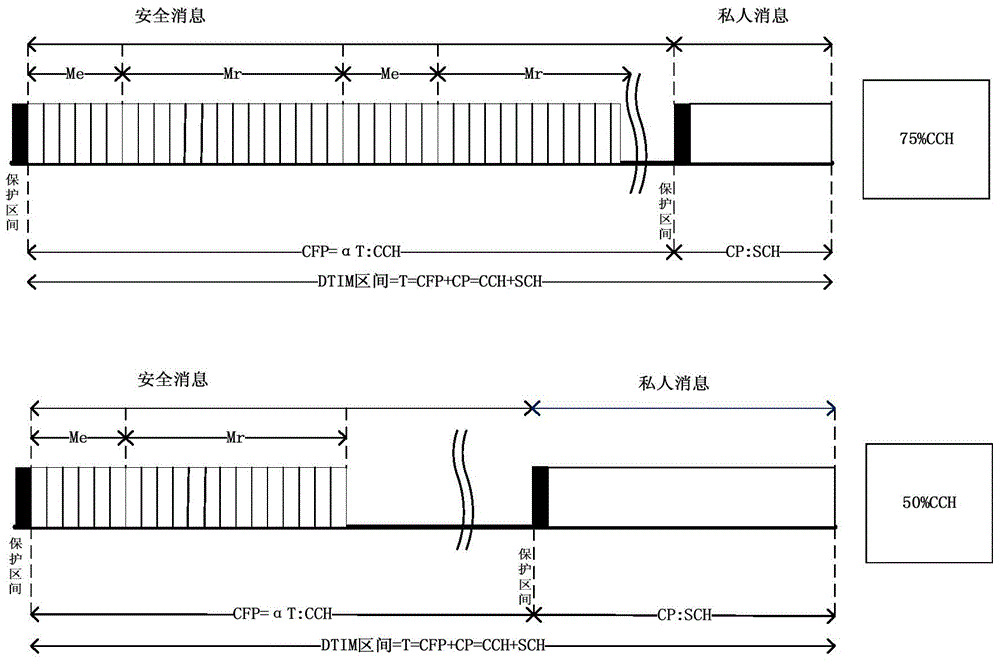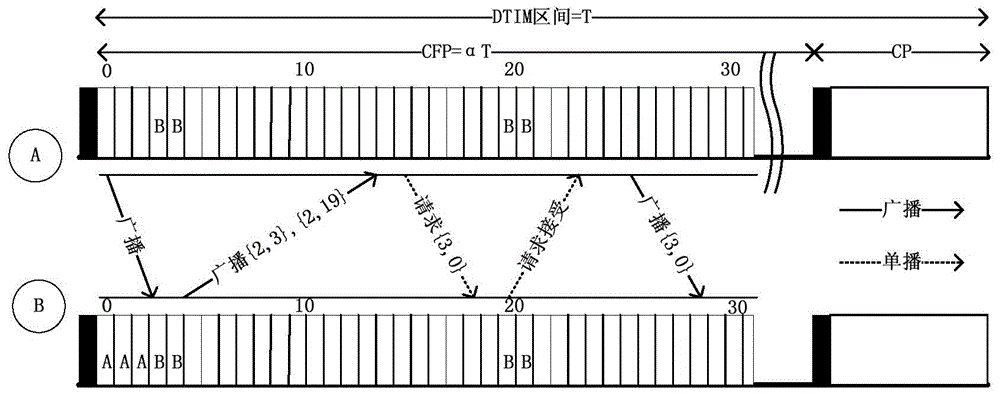Vehicle network-accessing method based on IEEE 802.11p
A technology for accessing networks and vehicles, applied in the field of network communication, it can solve the problems of unsatisfactory EDCA performance, great influence on network performance, and suboptimal parameter fixed performance.
- Summary
- Abstract
- Description
- Claims
- Application Information
AI Technical Summary
Problems solved by technology
Method used
Image
Examples
Embodiment Construction
[0026] The invention will be described in further detail below in conjunction with the accompanying drawings.
[0027] 1. VeDA inter-frame structure
[0028] The frame structure of VeDA is as follows figure 1 As shown, VeDA divides a DTIM (Delivery Traffic Indication Message) beacon frame into multiple time slots in 32 μs, and VDAOPs (VeDA Opportunities) are access time slots that are predetermined in advance when the access medium enters the channel. The media access point establishes the VDAOP by sending a VDAOP request information element (Information Element, IE). The request IE contains as follows:
[0029] VDAOP length (1B length)
[0030] VDAOP cycle (1B length)
[0031] VDAOP offset (2B length)
[0032] Therefore, the maximum frame length of VDAOP is 4096μs. The so-called VDAOP period is actually the number of VDAOP sub-intervals in a DTIM interval. The period of VDAOP is 0, which means that the reservation is only made once, and the reservation will not be repe...
PUM
 Login to View More
Login to View More Abstract
Description
Claims
Application Information
 Login to View More
Login to View More - Generate Ideas
- Intellectual Property
- Life Sciences
- Materials
- Tech Scout
- Unparalleled Data Quality
- Higher Quality Content
- 60% Fewer Hallucinations
Browse by: Latest US Patents, China's latest patents, Technical Efficacy Thesaurus, Application Domain, Technology Topic, Popular Technical Reports.
© 2025 PatSnap. All rights reserved.Legal|Privacy policy|Modern Slavery Act Transparency Statement|Sitemap|About US| Contact US: help@patsnap.com



